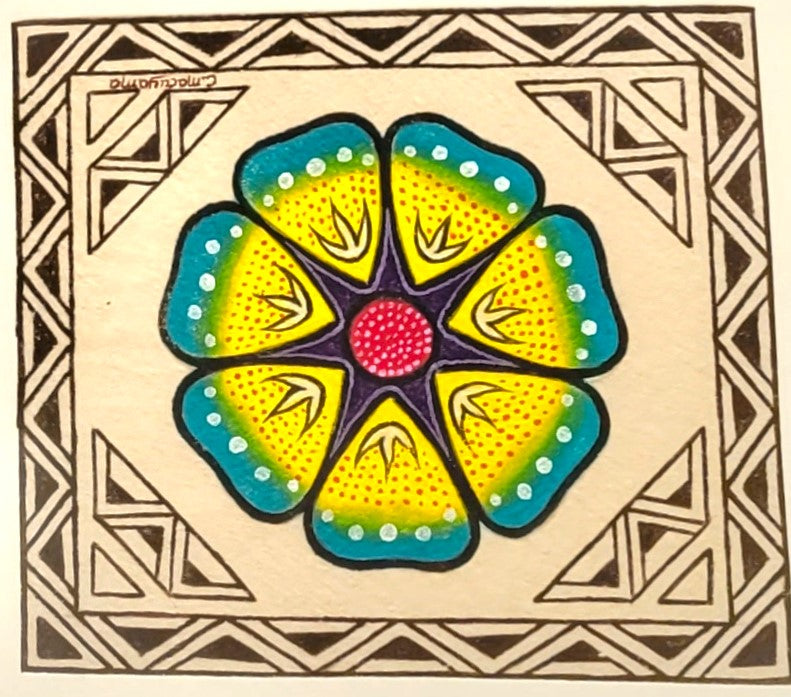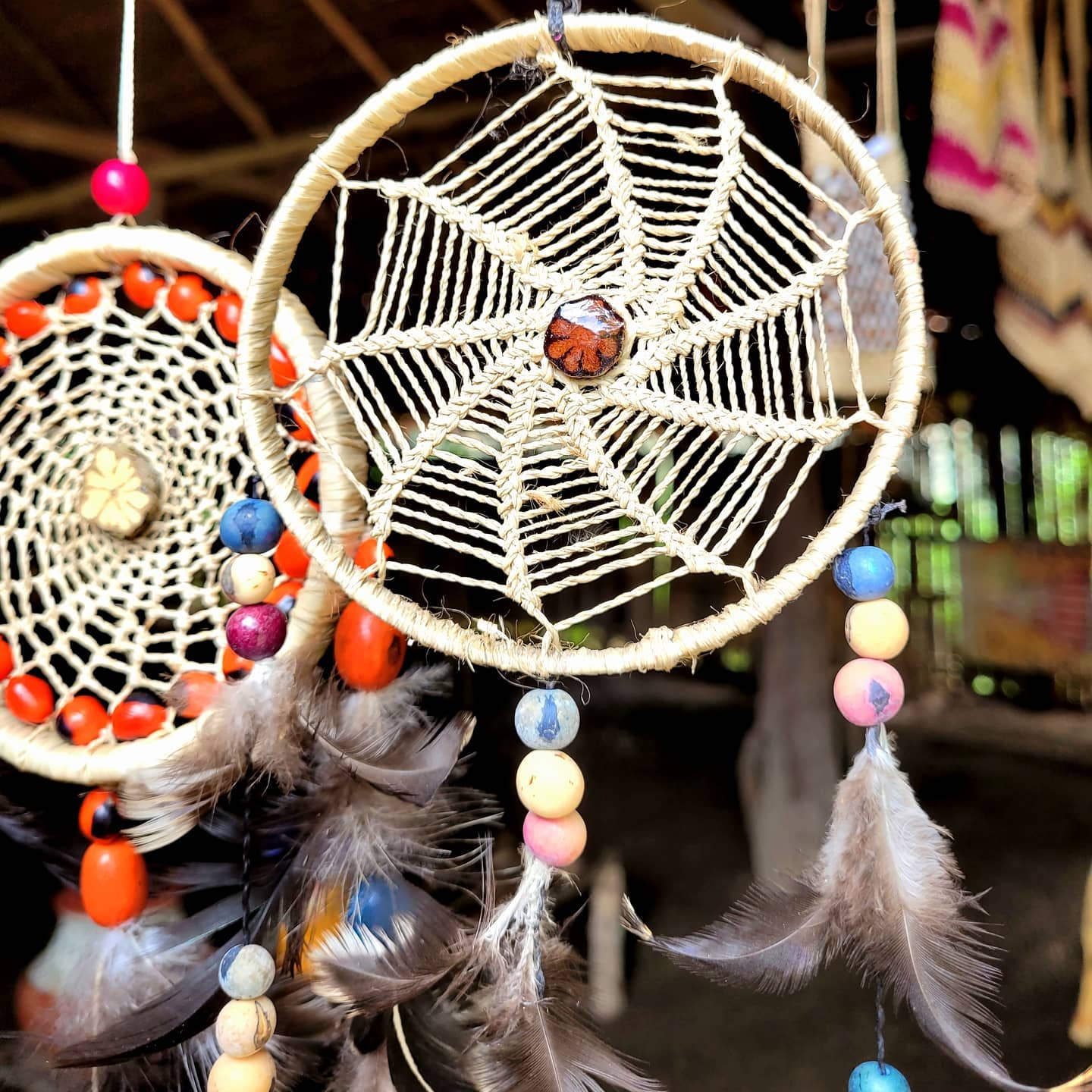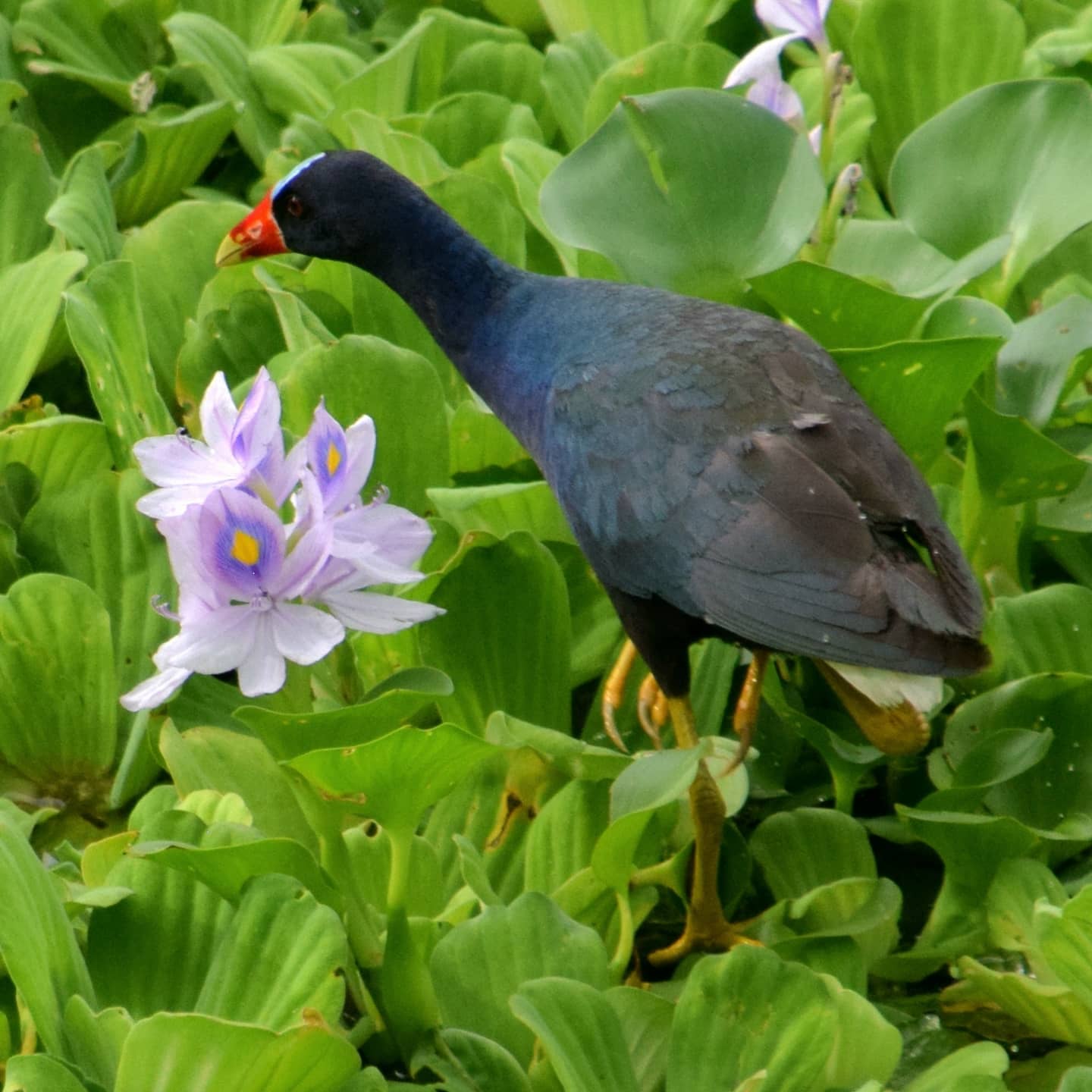Story and photos by Campbell Plowden, Executive Director, Amazon Ecology
After leaving the fourth Kukama maloca, we asked our guide Loida to join us for lunch. She confirmed my suspicion that the llanchama bark paintings had been made by one artist living somewhere else in town not by the women who had sold them. She also said that artisans from her maloca had made many of the dream catchers being sold by others.
So while the people in the other malocas had probably made some of the things they were selling, they were more like craft vendors in Iquitos who had more skill buying and reselling crafts than making them. I understand this business model that it is the same as our own, but this revelation renewed my desire to buy directly from the artisans who actually make the crafts we sell whenever possible.
In the case of the dream catchers, Loida assured me that she and her group could make any design we gave her with good quality for a wholesale price. The curaca Darvin could do the same with any kind of cane lampshade or basket. She knew one painter who made llanchama bark paintings so we went to see him next.
We walked through Clever's living room and kitchen and climbed up a rickety staircase to reach his studio. This was the first time I had met an artist who made the brightly colored toucans and macaws found in almost every souvenir shop in Iquitos. It was impressive to see his level of precision and organization working out of such a tiny crowded space.

He had not made the paintings we had got at the malocas, but we were excited to see photos of his work that was even better. I quickly commissioned him to do another set of butterfly paintings for us. I shouldn’t have been surprised to learn that his supply of llanchama bark came from Bora people from the Pebas area - the gateway to the Ampiyacu communities we closely work with.
His work promises to give us new opportunities to share this art form in the US and beyond. If we want to market more than a few of these paintings, though, we will have to seriously explore concerns about sustainable harvest of this raw material.
Several weeks later, it was great to find that Clever had followed up on his commitment to make a variety of paintings of flowers and butterflies. The colors and quality of his work was outstanding. We are now starting to sell these at festivals and will soon have them available through our online store.





